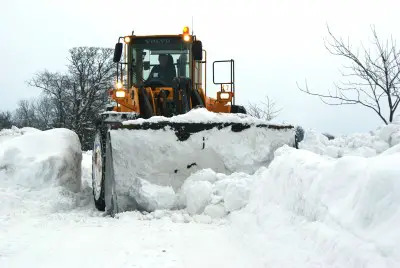The American Heart Association offers winter weather tips to keep people safe this winter from cold weather dangers like hypothermia and heart attacks that may occur as you exert more energy while shoveling snow.
The American Heart Association says that for most people, shoveling snow may not lead to any health problems. However, the association warns that the risk of a heart attack during snow shoveling may increase for some, stating that the combination of colder temperatures and physical exertion increases the workload on the heart.
 People who are outdoors in cold weather should avoid sudden exertion, like lifting a heavy shovel full of snow. Even walking through heavy, wet snow or snow drifts can strain a person’s heart. It’s important to know how cold weather can affect your heart, especially if you have cardiovascular disease.
People who are outdoors in cold weather should avoid sudden exertion, like lifting a heavy shovel full of snow. Even walking through heavy, wet snow or snow drifts can strain a person’s heart. It’s important to know how cold weather can affect your heart, especially if you have cardiovascular disease.
To help make snow removal safer, the American Heart Association has compiled a list of practical tips:
|
1. Give yourself a break. Many people aren’t conditioned to the physical stress of outdoor activities and don’t know the dangers of being outdoors in cold weather. Hypothermia means the body temperature has fallen below 95 degrees Fahrenheit. It occurs when your body can’t produce enough energy to keep the internal body temperature warm enough. It can kill you. Heart failure causes most deaths in hypothermia. Symptoms include lack of coordination, mental confusion, slowed reactions, shivering and sleepiness. 3. Don’t eat a heavy meal prior or soon after shoveling. 4. Use a small shovel or consider a snow thrower. 5. Learn the heart attack warning signs and listen to your body, but remember this: 6. Don’t drink alcoholic beverages before or immediately after shoveling. |
Heart Attack Warning Signs
Some heart attacks are sudden and intense — the “movie heart attack,” where no one doubts what’s happening. But most heart attacks start slowly, with mild pain or discomfort. Often people affected aren’t sure what’s wrong and wait too long before getting help. Here are signs that can mean a heart attack is happening:
|
As with men, women’s most common heart attack symptom is chest pain or discomfort. But women are somewhat more likely than men to experience some of the other common symptoms, particularly shortness of breath, nausea/vomiting, and back or jaw pain.
Calling 9-1-1 is almost always the fastest way to get lifesaving treatment. Emergency medical services staff can begin treatment when they arrive — up to an hour sooner than if someone gets to the hospital by car. EMS staff is also trained to revive someone whose heart has stopped. Patients with chest pain who arrive by ambulance usually receive faster treatment at the hospital, too. It is best to call EMS for rapid transport to the emergency room. If you can’t access EMS, have someone drive you to the hospital right away. If you’re the one having symptoms, don’t drive yourself, unless you have absolutely no other option.
For more information, visit your physician or call the American Heart Association at 800-AHA-USA1 (242-8721) or visit online at heart.org.





















